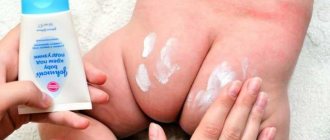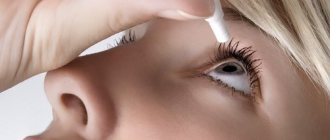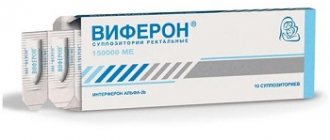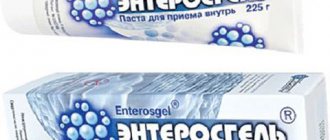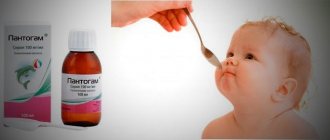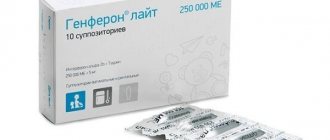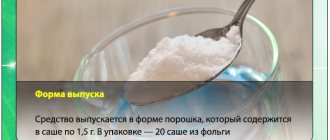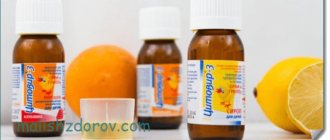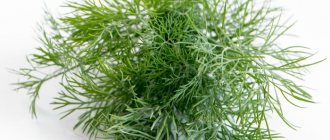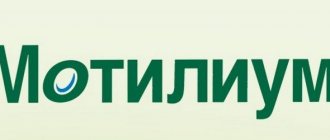0
3952
A newborn baby has practically no immunity, since the body’s protective reactions are still just being formed. The baby's delicate, sensitive skin is one of the first to take on the barrier function. Allergies, sweat rash, diaper rash, diathesis, diaper dermatitis - all parents face these consequences from exposure to an aggressive external environment.
Competent and regular baby care reduces the list of problems, but even with ideal care, few people manage to avoid skin diseases. Most often, problems of this kind are solved with the help of creams, ointments and powders, of which there are so many in the pharmacy chain that not every pediatrician can figure it out. Advertisements promise quick results, and some remedies really help, however, the price of such “helpers” is not affordable for every family. In the “good quality and good price” category, it is worth recalling a time-tested medicine – zinc ointment for newborns.
Components of zinc ointment and its action
The ointment has a simple composition, it is a mixture of 9 parts Vaseline and 1 part zinc oxide powder. It is the main active ingredient. Insolubility in water prevents zinc oxide from penetrating deeper into tissues, entering the bloodstream and causing intoxication. Therefore, its action is safe and has only a localized external nature.
The use of zinc ointment provides the following effects:
- antiseptic – antimicrobial, antifungal;
- anti-inflammatory;
- drying, astringent;
- soothing itching, irritation;
- antiallergic;
- protective – from sunlight and other influences;
- wound healing.
The ointment has no contraindications, does not cause side effects, and can be used at any age, as well as during pregnancy and breastfeeding. The exception is cases of intolerance to zinc oxide, which are extremely rare.
Experienced pediatricians recommend starting care for a newborn with a simple zinc ointment. In most cases, there is no need for other means.
Analogs
Among other zinc oxide-based products prescribed by dermatologists, Desitin is very popular. This 40% ointment is in demand for contact dermatitis, burns and various skin injuries. It can also be used in infancy, for example, for diaper rash, sunburn, diathesis or scratches, as well as to prevent irritation from diapers.
Another well-known analogue of “Zinc ointment” is a drug called “Tsindol”. Its difference is the dosage form, represented by a 12.5% suspension. The medication is used for diaper rash, dermatitis, chicken pox and other skin problems. In addition, for skin diseases, the doctor may recommend combination medications that contain zinc oxide and other active ingredients. This can be a salicylic-zinc paste, including 2% salicylic acid, due to which the anti-inflammatory effect of “Zinc Paste” is further enhanced.
You can replace “Zinc paste” and other products that contain zinc oxide with other topical medications used for various inflammations and skin lesions. Among them, the following are often prescribed in childhood.
- "Sudocrem". This multi-component medicine can be used from birth. In its composition, benzyl benzoate, lanolin, benzyl cinnamate and benzyl alcohol were added to zinc oxide. The drug is used to accelerate skin healing and reduce inflammation in wounds, burns, dermatitis, bedsores, and so on.
- "Bepanten." An ointment or cream with this name acts on the skin thanks to dexpanthenol. They are prescribed at any age for burns, abrasions, diaper rash, prickly heat and other problems, as well as to prevent skin irritation.
- "Elidel". This 1% cream containing pimecrolimus has a strong anti-inflammatory effect and is approved from three months of age. It is often prescribed for atopic dermatitis.
For more information about the use of zinc ointments and pastes in the treatment of children, see the following video.
https://youtube.com/watch?v=Q0pQML6cPco
Mothers who consulted dermatologists about rashes and inflammatory processes on the skin of their babies were faced with the fact that doctors primarily prescribed zinc ointment. This is a universal remedy for treating skin, it is non-toxic, has almost no contraindications, and is not dangerous in overdose. The ointment is effective for adults and children in various situations, so it is useful to have it in every home medicine cabinet.
Diaper dermatitis
The problem arises when there are violations in the use of diapers: inappropriate size, too tight and incorrect putting on, untimely replacement and lack of skin treatment. Mechanical and chemical damage occurs, against this background an infection occurs and inflammation develops.
Proper care and zinc ointment will protect your baby from diaper rash
The skin under the diaper turns red, swells, and a rash in the form of blisters and peeling may appear. These phenomena are well relieved by zinc ointment. After bathing the baby, the body should be thoroughly dried with soft blotting, be sure to take an air bath for 10–15 minutes, then apply ointment to problem areas and put on a diaper according to all the rules.
If a pustular rash, cracks, or increased body temperature appear on the baby’s skin, you cannot rely only on zinc ointment. It is necessary to seek treatment from a doctor.
Ointment for prickly heat
The problem arises from the very first days of a baby's life. The body's thermoregulation is not yet developed. A child easily overheats when overly wrapped, in a hot room, in the summer. Sweat is secreted as a protective reaction to cool the body. It irritates delicate skin, causing inflammation in the form of a small pink or red rash.
Miliaria has its favorite places - skin folds, neck, buttocks, back, elbows and popliteal fossae. Usually the child does not react in any way to this pathology. At the very initial manifestations of the rash, it is necessary to bathe it, dry the skin well, give it an air bath, and apply ointment. In case of excessive sweating, it is better to replace the ointment with zinc paste; it does not contain fat. You need to dress your baby in accordance with the ambient temperature, do not wrap it up or use clothes made of synthetic fabrics.
Is it possible to smear the baby's face?
In infants, diathesis, dermatitis, and perspiration often appear on the face. In these cases, zinc ointment can also be applied to the baby’s face, despite the thinner skin. In this case, you should avoid applying it to the skin of the eyelids, from where it can get into the child’s eyes. It can also be used to protect against sunburn while walking.
Zinc ointment can be applied to the baby's face to protect from the sun and eliminate skin problems.
Zinc ointment is an effective and safe means of caring for newborns; it is used to prevent skin problems in infants and treat them. This is confirmed by numerous reviews from parents. It is important not to forget to consult a pediatrician in doubtful cases.
source
Properties
Ointment with zinc for newborns is an antiseptic that relieves inflammation, disinfects, and dries out diaper rash and sweating. The product disinfects the wound, accelerates the healing of skin lesions, and relieves rashes and irritations.
The product is hypoallergenic (if the child is not allergic to preparations with zinc), there are no unforeseen consequences recorded, there is no alcohol in the composition of the medicine, therefore zinc ointment is actively used to treat the skin of children under one year old.
For infants in the first six months of life, the ointment can play the role of a sunscreen. The drug has prolonged properties.
Using zinc ointment for diaper rash in infants
Diaper rash in childhood, particularly in infancy, is a common phenomenon that occurs not only due to poor care. Children who have good care are also often susceptible to skin inflammation. To prevent inflammation and directly treat diaper rash in children, they often use not only drugs from well-known brands, but also those that have proven themselves to be good even before the birth of mothers. Zinc ointment for diaper rash is one of the inexpensive but effective treatment options.
Conditions for inflammation
Let's start with the concept of diaper rash. Diaper rash is an inflammation of the skin affected by:
- long-term hydration;
- overheating;
- lack of fresh air penetration.
In infants, such conditions may arise for the following reasons:
- High air temperature in the bedroom.
- High air humidity.
- Too warm clothes.
- Late change of clothes and diapers.
- Unsatisfactory child care.
Increased temperature and humidity lead to:
- to air stagnation;
- increased sweating in the baby.
If the room is poorly ventilated, then conditions for the development of skin inflammation will be created.
Warm underwear or clothing on a child causes local overheating of the skin, which means:
- sweating increases;
- skin secretion is released.
This leads to skin inflammation without additional conditions.
Untimely changing of diapers or diapers leads to skin irritation:
- groin area;
- buttocks;
- lower abdomen;
- backrests
Diaper rash often occurs at night, when tired parents are in no hurry to immediately change the diaper.
Considering that diaper rash develops very quickly - in 30-50 minutes or less, then the baby may have all the symptoms of inflammation until the morning.
Unsatisfactory care for a newborn is unacceptable, but, unfortunately, it does occur.
Children whose parents are in no hurry to change diapers, if any, or create conditions for a comfortable stay in the child’s bedroom, often suffer from various dermatological inflammations.
This can be not only diaper rash in the last stage, but also allergic reactions of various origins.
Symptoms
Any parent, even a young and inexperienced one, will be able to discern the symptoms of the onset of inflammation of the baby’s skin.
Diaper rash typically occurs in the following areas:
- on the neck;
- armpits;
- behind the ears;
- in the lower abdomen;
- in the lower part of the back;
- between the legs;
- between the buttocks;
- in the groin area;
- between the folds of the body.
Symptoms of inflammation on the skin of a baby are reduced to the following manifestations:
- redness;
- small rash on the skin;
- cracks;
- arising between the folds.
Factors in the development of diaper rash
There are several reasons:
- external;
- allergic reactions;
- congenital diseases.
External factors such as:
- moisture;
- warm;
- lack of fresh air circulation.
Allergic reactions may indicate a child’s intolerance to certain household items:
- household chemicals;
- food products.
It could also be an allergy to:
- diapers of a certain brand;
- washing powder or soap;
- foods that a mother eats while breastfeeding.
The presence of these irritations causes the development of diaper rash and skin irritations.
Treatment
When a baby has diaper rash, you first need to eliminate all external factors that contribute to the development of skin inflammation.
For direct treatment, different methods of therapy are used, depending on the stage of diaper rash.
At the initial stage, with local redness, it is enough to treat the affected skin with antiseptics, both herbal and medical origin.
For these purposes use:
A bath with the addition of a decoction is a good way to relieve irritation on the skin:
- pharmaceutical chamomile;
- celandine herbs;
- successions.
After taking a bath, wipe the baby's skin and allow it to dry at room temperature. After which the affected areas of the skin are treated with antiseptics.
The next stage of treatment consists of using an ointment or cream with bactericidal properties. The usual baby cream for the treatment procedure is not effective enough.
Application of zinc-based ointments
Salicylic-zinc paste has excellent antiseptic and anti-inflammatory properties for inflammation or diaper rash.
The paste contains salicylic acid, which has anti-inflammatory properties, and zinc oxide, which is successfully used for drying wounds and healing. This dual composition works well in treating diaper rash.
The use of an ointment based on one component - zinc, also speeds up the treatment process.
By itself, zinc oxide has a drying, antibacterial property, and also protects the skin from the development of bacterial or fungal flora.
Zinc ointment for newborns against diaper rash is successfully used both as a therapeutic agent and as a preventive therapy.
Zinc ointment for diaper rash is used as follows:
- Treat affected skin areas or those prone to inflammation with an antiseptic.
- After the antiseptic solution has dried, apply a thin layer of zinc ointment to the affected areas or areas of skin prone to diaper rash.
Quite simple procedures are not difficult to perform; it is enough to carry them out 1-2 times a day for prevention.
Also, zinc paste for diaper rash can be used to treat moderate skin inflammations, characterized by the presence of rashes and small wounds.
When is it prescribed?
If you look at the instructions to find out when zinc ointment is indicated for diaper rash in newborns, you can see a list of skin problems:
- Diathesis. Various types of diathesis are generally understood as the reaction of the immune system to a food product foreign to the body. The immune response manifests itself in the form of itchy red rashes on the baby’s cheeks and in some other areas. Zinc ointment with cooling properties will help stop the inflammatory process and reduce itching. Treat the skin up to 5 times a day.
- Dermatitis. A medicine based on zinc oxide is one of the few drugs approved for long-term use. Therefore, for dermatitis that needs to be treated for more than one day, this is the best option, eliminating itching, inflammation and other manifestations of the disease on the child’s cheeks, elbows, and knees.
- Diaper dermatitis. Most often, zinc ointment is used when problem areas (buttocks, thighs, perineum, groin area) turn red and diaper rash appears. If you ignore the problem at the initial stage, the area affected by dermatitis increases, crusts, papules, and erosions are added. In an advanced state, complications develop when infected with fungal and staphylococcal agents. Among the characteristic symptoms of such a lesion is the appearance of bubbles with cloudy liquid. To avoid such severe consequences, it is necessary to treat problem areas with zinc ointment until the symptoms disappear completely, especially when putting on diapers. You can also apply the medicine under a bandage.
- Diaper rash or prickly heat is a symptom of not only diaper dermatitis. Most often, the folds of a child’s neck or armpits suffer from them in the summer, when the body sweats profusely in synthetic clothes, remains in a wet diaper for a long time, or the baby is poorly dried after bathing. Ointment with zinc for newborns also helps against diaper rash : it quickly eliminates hyperemia and heals damage. The frequency of treatment in this case is up to 6 times a day, usually after changing the diaper. If it has not been changed for a long time, it is worth treating problem areas with zinc ointment for prevention.
- Viral rash. The antiseptic also helps adult children fight chickenpox or acne. In the first case, the ointment with its cooling effect helps to cope with severe itching. Teenagers dry out oily skin to remove acne. Frequency of treatment – up to 5 times/day.
Prevention
Preventive measures
represent:
- maintaining the child’s personal hygiene;
- treating the skin with antiseptic drugs.
- zinc ointment;
- sea buckthorn oil;
- fucorcin;
- hydrogen peroxide.
But, it should be noted that for the treatment of skin affected by wounds, the use of fucorcin or hydrogen peroxide is not suitable, since damaged wounds will burn a little.
To treat affected areas of the second and third degree, it is better to use baths with the addition of manganese, which disinfects well and dries out skin rashes.
Treatment should be carried out correctly after full consultation with examination by a pediatrician.
Zinc ointment and paste for newborns: instructions for use for diaper rash and prickly heat in children
The skin of a newborn baby is very delicate and vulnerable to external factors. The mother needs to carefully care for her, however, even with proper care, various skin problems may arise in the baby: diaper and atopic dermatitis, diaper rash, prickly heat, diathesis, allergic rashes, etc. As a rule, all these problems are solved with the help of creams and ointments , of which there is a huge variety. At the moment, more and more parents prefer a proven, effective and inexpensive remedy - zinc ointment.
Zinc ointment has found wide use in the treatment of many skin inflammations; it can even be used in the treatment of infants
What is prohibited?
In some cases, the well-being of a child suffering from prickly heat may worsen due to incorrect and thoughtless actions of parents.
Therefore, it is important to know what not to do in case of such skin irritation in children. So, it is prohibited:
- squeeze out nodules and vesicles that appear on the baby’s body;
- smear the rash with iodine or brilliant green - this can cause the formation of chemical burns;
- use antibiotics, topical corticosteroids or other potent local drugs without a doctor’s prescription;
- use creams and ointments with a moisturizing effect, as they will not allow air to fully circulate in the skin cells, which will lead to even greater irritation;
- make sudden movements when lubricating prickly heat or drying the affected skin after bathing the baby.
These are basic but very effective security measures. By following them, parents can be sure that they will not harm the child or worsen his condition.
Composition of zinc ointment
Zinc ointment contains zinc oxide and petroleum jelly. As an additional component, the product may contain white paraffin. Zinc ointment has an antiseptic, astringent and drying effect. It is a white substance with a rather thick consistency. The drug does not contain any hormonal or harmful additives, making it absolutely safe for newborns.
Zinc ointment has proven itself well in the application of various skin problems. The product is available in small tubes or jars. Can be used without a doctor's prescription.
Analogs
Zinc paste can be replaced with the following medications:
- Zinc ointment. It also contains zinc oxide as an active ingredient, but if its content in the paste is up to 25%, then in the ointment it is no more than 10%. The ointment contains petroleum jelly as an additional component; it penetrates the skin better than paste and is usually used when the acute phase of the disease has passed. Zinc ointment can be used not only for diaper dermatitis and microdamage to the skin, but for the treatment of herpes simplex, streptococcal pyoderma, and sun allergies. It can be used from birth. According to indications, zinc ointment is allowed to be used by pregnant women and breastfeeding women.
- Tsindol contains zinc oxide as a medicinal component. Unlike Zinc paste, the drug is available in the form of a suspension. Tsindol is used for dermatitis, burns and skin ulcers. The only contraindication to prescribing the drug is individual intolerance to the active and additional components included in its composition. Tsindol contains ethanol, so you need to make sure that it does not come into contact with your eyes. The suspension can be used from birth, during pregnancy and lactation.
- Desitin is a dermatoprotective agent that is produced in Russia. It contains zinc oxide as an active ingredient and is produced in the form of an ointment. Desitin differs from Zinc paste in the composition of auxiliary ingredients. The ointment has an anti-inflammatory effect, prevents the occurrence of diaper dermatitis, and protects the skin from urine and other aggressive substances. After application to the skin, a film is formed on it, which reduces the likelihood of a rash. The drug has a drying and antiseptic effect, so it can be used for microdamages of the skin. The ointment helps with minor burns and eczema. Desitin can be used in children, including those in the first year of life. According to indications, the ointment is allowed to be used by pregnant and lactating women.
- Bepanten plus is a substitute for Zinc paste in the therapeutic group. The medicine is produced in the form of a cream. It promotes rapid healing of the skin when its integrity is violated, and has an antiseptic effect. Bepanten Plus can be used in children from the first days of life, during pregnancy and breastfeeding.
- Sudocrem is a combination drug, one of the active components of which is zinc oxide. It is produced in the USA or Ireland in cans of 10, 60 and 125 g. Its active components stop inflammation, have a local anesthetic, astringent and antiseptic effect. They soften and soothe the skin, accelerate wound healing. Sudocrem can be used in patients of any age. It is allowed to be used during pregnancy and breastfeeding. Sudocrem can be used for diaper dermatitis, eczema, sun and thermal burns, acne, frostbite. When using it, you need to make sure that it does not get into your eyes or mucous membranes; if this happens, Sudocrem should be washed off with water. The drug should not be used if you are intolerant to its composition, otherwise it may cause an allergy.
- Baby powder is produced by several companies in the form of powder for external use. It contains zinc oxide as an active ingredient. This is a dermatoprotective agent, which, when applied to the skin, has an adsorbing, drying and astringent effect, preventing inflammation and irritation. The powder can be used from the first days of life for diaper rash and dermatitis. It is contraindicated in acute purulent-inflammatory diseases and in case of individual intolerance to its composition.
- Redecil is a substitute for Zinc paste in the therapeutic group. The drug is available in the pharmacy in the form of an ointment. Its active components accelerate the healing of damaged skin. The ointment should not be applied if you are intolerant to its composition, hypervitaminosis A, or acute inflammatory skin diseases. In the first trimester, Redecil should not be applied to large areas. During therapy you should stop breastfeeding.
Only a doctor should select an analogue instead of Zinc paste, since a specialist can make the correct diagnosis and decide which drug is best for a particular patient.
Properties of zinc ointment
Zinc ointment has an excellent anti-inflammatory effect and is suitable only for external use. It is found in the form of paste, ointment and liniment.
The product has quite a variety of properties:
- promotes faster healing of wounds;
- has a disinfecting effect;
- has a drying effect;
- helps reduce the amount of sebum produced;
- creates a protective film on the surface of the skin and prevents the formation of suppuration;
- suppresses the risk of developing inflammatory processes.
Zinc ointment can be used in the treatment of newborns; it is completely safe for little people.
Thanks to its qualities, zinc ointment has proven itself to be an excellent remedy for diaper rash, prickly heat, diaper dermatitis and other skin diseases in children. Safety of use has made it a constant companion for newborns.
Emergence of difficulties
In the case of a fungal or bacterial infection against the background of severe inflammation and redness, pustules appear. The child's condition is deteriorating. In this case, only antibacterial or antifungal agents can help.
A good remedy Sudocrem fights irritation, itching and inflammation. The composition disinfects the surface, destroys bacteria and fungus. Apply directly to the problem area no more than once a day.
Syntomycin ointment treats inflammatory processes on the skin caused by bacteria. After the first use, the child’s condition improves, the area stops itching and hurting.
Candida ointment is used if a fungal infection is added to the symptoms of diaper rash. Not recommended for use on open wounds.
It is convenient to use Baneocin in the form of a powder. Treat the affected area on the neck or groin area. Inflammation quickly passes, wet wounds dry out and tighten. The use of the drug in the form of an ointment is allowed.
Diaper rash can be treated with Zinc ointment. It has antibacterial and wound-healing properties. The inflamed area on the child’s skin dries out, stops itching, hurting and causing discomfort. It is recommended to use no more than twice a day.
Salicylic ointment disinfects the surface, reduces the area of inflammation, heals wounds and absorbs excess liquid. In children, only 1% ointment is allowed to be used.
The compositions are applied in a thin layer directly to the affected area and only after examination by a doctor. It is imperative to observe the dosage and duration of treatment.
Instructions for use of zinc ointment
Before applying the product, be sure to change the baby's diaper. Typically, the drug is used only when necessary; one or two applications per day are sufficient. Treatment is continued until the problem disappears completely, but use for more than 30 days is not recommended.
Use for diaper rash
Quite often, mothers have to deal with the problem of diaper rash in their baby. The appearance of diaper rash is often caused by being in a wet diaper for a long time or by insufficient drying of the baby’s skin after washing. In summer, this problem can arise due to the heat, when active sweating occurs. The drug helps to quickly get rid of redness and heal injured skin.
Use for diaper dermatitis
This disease is widespread among newborns. Using the product for dermatitis will help eliminate inflammation and itching. A positive quality of zinc ointment is the ability to use it for a long period of time, until the symptoms completely disappear. The ointment should be applied as needed.
Use for diathesis
Diathesis is characterized not only by the appearance of red spots on the skin, but also by severe itching (we recommend reading: how to properly treat diathesis in an infant?). Having a cooling effect, zinc-based ointment helps get rid of all these unpleasant symptoms. If you are sick, it is recommended to use the product about 5 times a day. If peeling skin occurs, you need to use a cream to get rid of this problem.
Composition of the medicine
Zinc-based ointment in appearance is a white or cream-colored substance with a dense consistency. According to the instructions, the medication has antiseptic, anti-inflammatory and drying properties. The release form of the drug is jars or tubes weighing up to 30 g. The medicine is dispensed without a prescription. The price of the ointment is quite affordable - 30-40 rubles. per package. If you store the medicine under the conditions specified by the manufacturer (temperature up to 15 degrees, away from direct sunlight and children's attention), then it retains all its medicinal properties for up to 5 years.
The active ingredient in the recipe is zinc oxide. Vaseline and sometimes paraffin are used as a filler. The ratio of ingredients in the medication is 10:90. As you can see, the medicine does not contain hormones or other dangerous ingredients. And yet, it has proven itself excellent in treating many children's skin problems.
Features of zinc paste
In addition to zinc ointment, zinc paste is widely used in the treatment of various skin diseases. It is a thick white mass that has virtually no odor. Available in the form of a glass jar or aluminum tube.
Similar to zinc ointment, the main component in the paste is zinc oxide. In addition, it may contain petroleum jelly and potato starch. Zinc paste has the following qualities:
- anti-inflammatory;
- astringents;
- adsorbent;
- drying;
- antiseptic.
Zinc paste has a slightly different composition, but is no less effective in treating skin problems
How to use
It is necessary to smear the skin with any nourishing cream on top of the zinc-based cream
As with any other medicinal product, instructions are included in the package. First, read and familiarize yourself with it, it describes in detail the composition, when and by whom it is used, how it is used, side effects, who can and who can’t.
The use of zinc paste is quite simple. Before spreading, the skin is cleansed for both adults and children. When a child develops diaper rash in the groin area, first wash it, gently dry the area, and apply a thin layer of ointment. For diapers you can also apply powder at the same time. If diaper rash on the skin has already transformed into erosion with the formation of weeping surfaces, the paste is applied in a thicker layer; in this case, Fukortsin can be added, as well as salicylic ointment.
Quite strongly, zinc ointment for diaper rash can begin to dry out the skin, which is why peeling immediately appears on it. To avoid this, apply any cream with nutrients to the skin on top of the zinc-based cream. For newborns, such a cream can be a regular baby cream. It will be convenient to immediately mix zinc ointment and cream in the same amount so that there is a simultaneous moisturizing and healing effect.
Diaper cream
Most babies spend a lot of time in a diaper during their first year of life. Residues of urine and bowel movements accumulate on the surface of the skin and lead to irritation of the protective layer. This contributes to the occurrence of diaper rash, redness and other skin manifestations. It is important for parents to take care of their baby’s delicate skin and choose the right diaper cream for him.
When choosing a diaper cream for your baby, you should know that it must have the following properties:
- antibacterial;
- anti-inflammatory;
- hypoallergenic;
- contain only natural ingredients;
- promote gas exchange on the surface of the skin;
- waterproof;
- eliminate irritation;
- ease of use.
First, make sure that the diaper you choose is suitable for your baby's skin. If your baby does not have a negative reaction in the form of an allergy, then you have made the right choice.
When using diaper cream, keep in mind that no product will help if the baby’s bottom is wet all the time
It is important to know how to use the product correctly:
- Apply baby cream only to clean, dry baby skin. Every time you change diapers, you should wash your baby and then absorb the moisture in a towel. If necessary, wet wipes can be used.
- It is important that after water procedures the baby takes air baths. It won't be bad if you do a light massage with stroking movements.
- After this, you can proceed to using the cream. Apply it in a thin layer in the area of the buttocks and allow the cream to be completely absorbed.
- In addition, it is advisable to treat the groin and knee folds.
- You can start dressing your child only after the cream has been completely absorbed.

